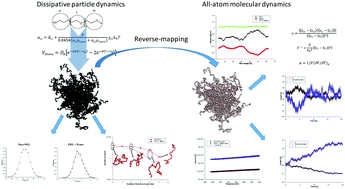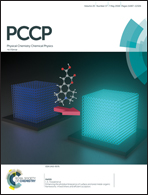Characterizing the structure and properties of dry and wet polyethylene glycol using multi-scale simulations†
Abstract
Simulation results for polyethylene glycol by employing a multi-scale approach combining mesoscopic and atomistic scales to characterize its structural, material and thermal properties in dry and wet environments are reported. After a meso-structure is created, DPD simulations with explicit hydrogen bond attraction are run for a molecular understanding of PEG oligomers. The meso-structure is analysed by the end-to-end distance and radius of gyration values, where we notice that water has an effect that makes the chains more flexible compared to the dry material, i.e., acts as a ‘plasticizer’ (as observed experimentally). Moreover, the helical formation of PEG chains is monitored by meso-scale simulations and a larger distribution of helical chain formation is found for wet PEG. Following the DPD simulations, a reverse-mapping algorithm is used to insert atomistic detail into the mesoscopic configuration in order to run atomistic molecular dynamics simulations to calculate material properties. The comparison of the elastic properties in dry and wet environments shows that PEG becomes less compressible and more elastic upon addition of water. Moreover, the estimated coefficient of thermal expansion is in good agreement with the experimental value of a lower molecular weight PEG.



 Please wait while we load your content...
Please wait while we load your content...